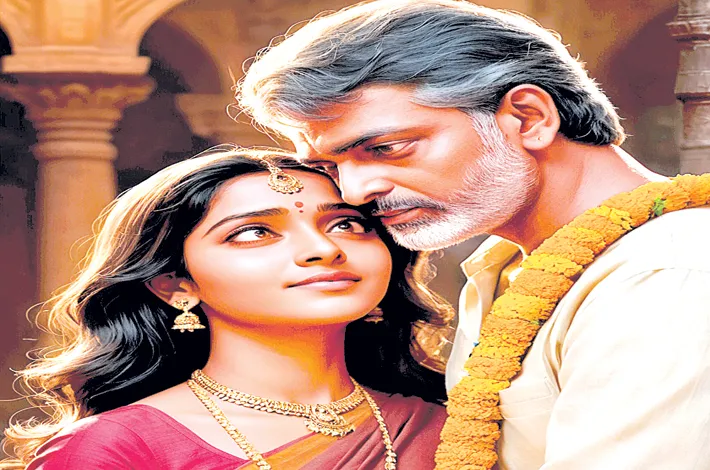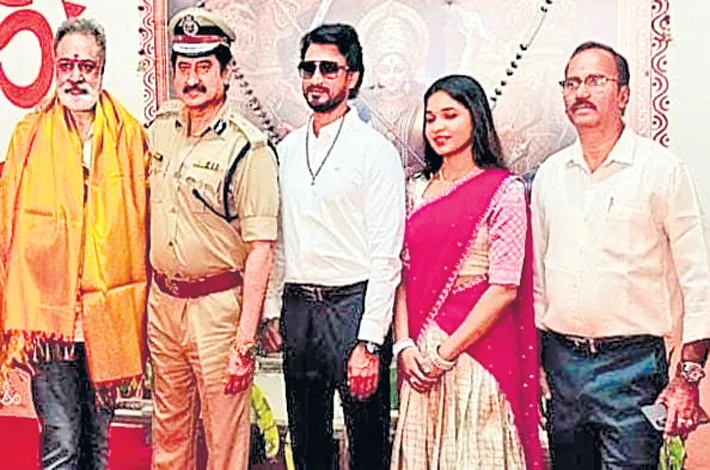The Dance of Swarna
05-05-2025 12:00:00 AM

When Meenakshi was offered a chance to perform abroad, curated by a renowned Odissi dancer, her heart soared—and then sank. The opportunity meant leaving everything behind: her mother, the school, and Chandrasekhar
In the heart of a bustling Telugu town, where temple bells mingled with the chatter of markets, lived Meenakshi, a young woman whose grace was matched only by her disdain for tradition. Her days were spent in the cool shade of her family’s ancestral home, her fingers tracing the edges of modern novels, her heart yearning for a world beyond the rhythmic chants of classical dance. Meenakshi was a paradox—a dancer of unparalleled talent who saw her art as a chain to the past, not a bridge to the future.
Her mother, Saraswati, a former Odissi dancer, had trained Meenakshi since she was a child, hoping to pass on the legacy of their family’s dance school. But Meenakshi resisted, her performances mechanical, her eyes devoid of the spark that once lit up her mother’s recitals. “Why must I dance to tunes that belong to another time?” she’d argue, her voice sharp as the anklets she refused to wear.
Into this world stepped Chandrasekhar, a poet and dreamer from Hyderabad, who had returned to the town to document its fading arts. With his worn notebook and a heart full of stories, he wandered the streets, captivated by the town’s blend of old and new. One evening, as the sun dipped low, painting the sky in hues of saffron and rose, he stumbled upon Meenakshi practicing alone in the courtyard of the dance school. Her movements were flawless, yet her face was a mask of reluctance. Chandrasekhar watched, spellbound, not by her skill but by the quiet rebellion in her eyes.
He approached her the next day, his smile warm, his words careful. “Your dance is beautiful, but it feels like you’re fighting it,” he said, leaning against the tamarind tree that shaded the courtyard. Meenakshi, wiping sweat from her brow, scoffed. “You’re one of those romantics, aren’t you? Thinking art can save the world.”
Chandrasekhar grinned, undeterred. “Maybe not the world, but it might save you.” Their conversations became a daily ritual. Chandrasekhar would sit cross-legged on the stone floor, scribbling notes as Meenakshi spoke of her dreams—to study literature, to travel, to escape the expectations that bound her. He listened, not with pity, but with a quiet understanding that made her feel seen. In return, she began to notice the way his eyes lit up when he spoke of poetry, the way his hands moved like they were weaving invisible threads of stories.
One monsoon evening, as rain pattered on the tiled roof, Chandrasekhar convinced Meenakshi to dance, not for her mother or the town, but for herself. “Forget the rules,” he said, his voice soft but firm. “Dance what you feel.” Hesitant at first, Meenakshi closed her eyes, letting the rhythm of the rain guide her. Her movements were no longer rigid; they flowed like the river that swelled outside, wild and free. Chandrasekhar watched, his heart swelling with something he dared not name.
As weeks turned to months, their bond deepened. Chandrasekhar began to help at the dance school, organizing recitals to revive interest in the fading art. He roped in local musicians, convinced shopkeepers to sponsor events, and even persuaded Meenakshi to choreograph a piece that blended Odissi with modern music. The town buzzed with excitement, and for the first time, Meenakshi felt a flicker of pride in her dance.
But love, like dance, is never without its missteps. When Meenakshi was offered a chance to perform abroad, curated by a renowned Odissi dancer, her heart soared—and then sank. The opportunity meant leaving everything behind: her mother, the school, and Chandrasekhar. She confronted him under the tamarind tree, her voice trembling. “If I go, I might never come back. And if I stay, I’ll always wonder what could have been.”
Chandrasekhar’s face was a storm of emotions, but his voice was steady. “You think I’d ask you to stay? Meenakshi, I love you too much to clip your wings.” His words, raw and honest, broke something in her. She realized then that love wasn’t about possession—it was about setting someone free to find their own rhythm.
The night before her departure, the town gathered for Meenakshi’s final performance. The stage was adorned with marigolds, the air thick with anticipation. As she danced, her movements told a story of struggle, love, and liberation. Chandrasekhar stood at the back, his notebook forgotten, tears in his eyes. When the music faded, the crowd erupted, but Meenakshi’s gaze found only him.
She didn’t board the plane the next day. Instead, she returned to the courtyard, where Chandrasekhar waited, his expression a mix of hope and fear. “I couldn’t go,” she said, her voice steady. “Not because I’m afraid, but because I choose this—us, the school, this life.” She took his hand, her anklets chiming softly. “You showed me that dance isn’t just tradition. It’s my voice.”
Chandrasekhar pulled her close, his laughter mingling with the rustle of leaves. “Then let’s write a new story,” he whispered, “one where we dance together.”
And so, in that small Telugu town, Meenakshi and Chandrasekhar wove their lives into a tapestry of art and love, proving that sometimes, the most beautiful dances are the ones we create with those who see us for who we truly are.








